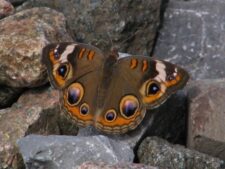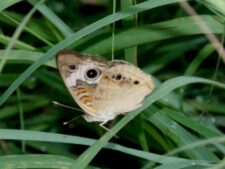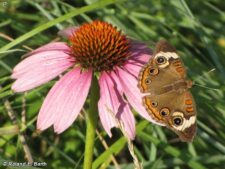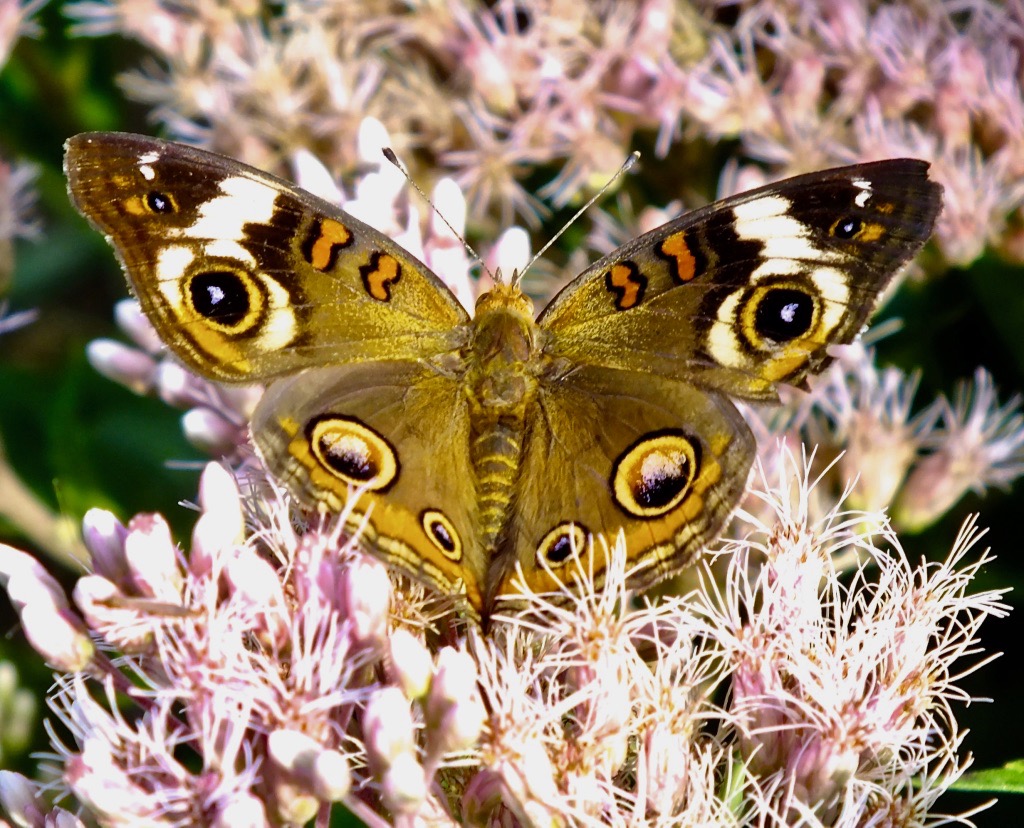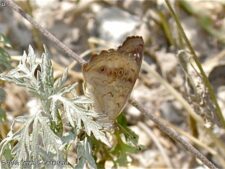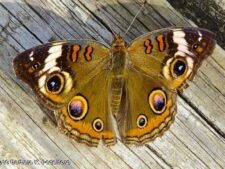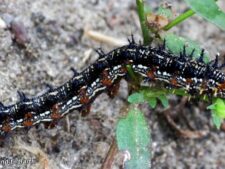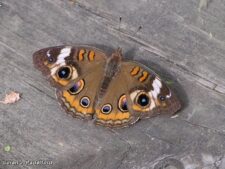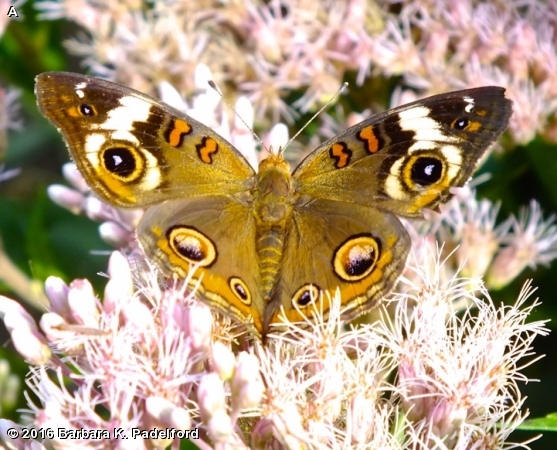
This butterfly has a wingspan of 2 to 2 1/2 inches. The Buckeye is mostly brown dorsally, with large, black eyespots with yellow rims and blue irises. On the forewing there is a white diagonal bar and a pair of short, orange bars on the leading edge. In addition to large eyespots, the hindwing has a wide orange line near the margin. Ventrally, the forewing is lighter in color and the hindwing is tan to rose-brown with eyespots absent or very small. Mature caterpillars are approximately 1 3/4 inches in length. Coloration is variable, but they are usually black above, and white or yellow to orange along the sides with blue-black dorsal spines. The head is orange with some black on the top of each lobe. There is a pale stripe along the dorsal midline.
This is a southern emigrant that shows up in early to late summer. It is more common in some years than others. It usually sits on the ground or low in vegetation and can also be seen nectaring on flowers.
In summer, adults move northward as far as southern Canada. No stage of the butterfly can withstand freezing temperatures, so it must recolonize its summer range each year. In fall, a southward movement of large numbers of these butterflies has been noted along the east coast. There are a wide variety of host plants including figwort, plantain, gerardia and vervain.
Disclaimer: The content of NatureSearch is provided by dedicated volunteer Naturalists of Fontenelle Forest who strive to provide the most accurate information available. Contributors of the images retain their copyrights. The point of contact for this page is: Babs Padelford.

